The dinosaurs that made a mark on humans are typically huge and bulky — but the velociraptor is different. Velociraptors are small and cunning, agile and adaptable. Or are they?
The fierce image of a velociraptor on the prowl is deeply etched into our collective imagination, thanks in part to its starring role in the blockbuster movie franchise, “Jurassic Park.” But how much of what we know about this fascinating creature is based on reality, and how much is pure Hollywood fiction? While Hollywood did get some things right about the velociraptor, it also got a lot of things wrong. Let’s dig in and see.

Raptor Dinosaurs
The velociraptor was a relatively small dinosaur. It measured 1.5–2.07 meters (4.9–6.8 ft) long and weighed about 14.1–19.7 kg. It was a member of the raptor dinosaur family — also called the Dromaeosauridae family.
Raptor dinosaurs started flourishing around 75 million years ago during the Late Cretaceous period. This means it wouldn’t have been contemporary with the Tyrannosaurus Rex, who lived 68 to 66 million years ago. It also wouldn’t have been contemporary with the triceratops, which lived in the same period as T-Rex, or with the Stegosaurus, which lived way earlier, 150 million years ago.
Sorry, Jurassic Park fans: the velociraptor would have likely never met with any of these dinosaurs. It was, however, contemporary with other Tyrannosaurs (just not T. Rex).
The Raptor Family Tree
The name Dromaeosauridae means ‘running lizards’, but in common language, these dinosaurs became known as ‘raptors’.
These dinosaurs were pretty common. Dromaeosaurid fossils have been found across the globe, on all continents. The earliest raptor fossil dates from the Early Cretaceous (145-140 million years ago), and some lasted until the end of the Cretaceous, 66 million years ago.
Though they share common traits, the raptor family was quite diverse. Ranging from the small Microraptor to the larger Utahraptor, there was significant variation in size, habitat, and hunting strategy. Some were solitary hunters, while others might have operated in packs.
New discoveries all the time
New raptor species are being uncovered constantly — a testament to how much we’ve still yet to discover about them. For instance, in 2019, Philip Currie and Clive Coy from the University of Alberta and David Evans at the Royal Ontario Museum discovered a new raptor dinosaur that they believe looked like this:

“Palaeontology in general is a gigantic puzzle where most of the pieces are missing. The discovery and description of this specimen represents the recovery of many pieces of the puzzle,” said Currie, professor in the Department of Biological Sciences and Canada Research Chair in Dinosaur Paleobiology. “This ranks in the top discoveries of my career. It is pretty amazing.”
This is far from the only recent raptor dinosaur discovered. Another 2009 study found that mini-raptors roamed today’s North America.
The dinosaur, which they call Hesperonychus elizabethae, ran about on two legs and had razor-like claws and an enlarged sickle-shaped claw on its second toe — but it was smaller than a cat.
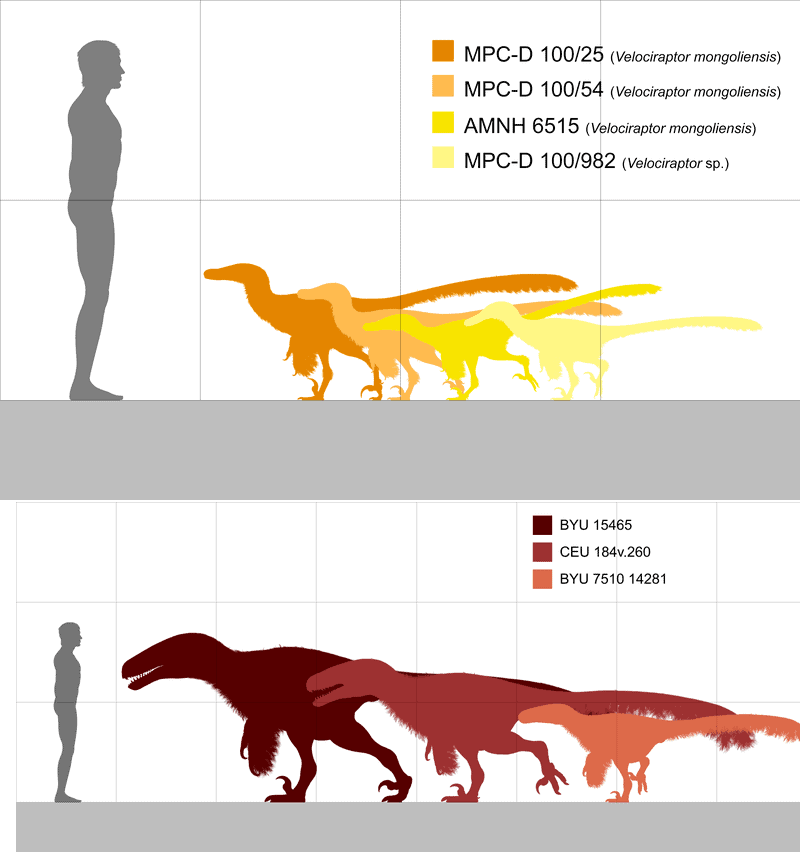
“Hesperonychus is currently the smallest dinosaur known from North America. But its discovery just emphasizes how little we actually know, and it raises the possibility that there are even smaller ones out there waiting to be found,” said Nick Longrich, a paleontology research associate at the University of Calgary’s Department of Biological Sciences.
“Small carnivorous dinosaurs seemed to be completely absent from the environment, which seemed bizarre because today the small carnivores outnumber the big ones,” he said. “It turns out that they were here and they played a more important role in the ecosystem than we realized. So for the past 100 years, we’ve completely overlooked a major part of North America’s dinosaur community.”
“This mini raptor was half the size of a domestic cat and probably hunted and ate whatever it could for its size – insects, mammals, amphibians, and maybe even baby dinosaurs,” Longrich said. “It probably spent most of its time close to the ground searching through the marshes and forests that characterized the area at the end of the Cretaceous.”
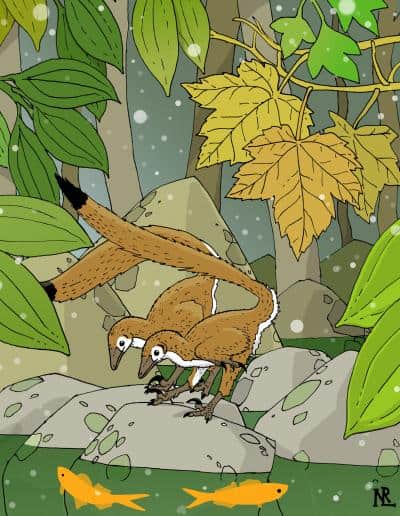
Raptor dinosaurs common features
Raptor dinosaurs had a lot of features in common. Dromaeosaurids have a distinct body plan that suggests that they would have been active, fast, and closely related to birds.
One of the defining features of the raptor family is the curved, sharp claw on the second toe of each hind foot. This claw could have been used in hunting, as all these animals were carnivorous.
They also had long tails that would help with balance when running fast or gliding/flying.
Wait, what? Raptors could fly?!

Most researchers agree that at least some species of raptor (though not the velociraptor) could have been able to fly or glide. Some studies suggested that they deployed a strategy in which they would launch from a perch and swoop downward in a U-shaped curve, then lift again to land on another tree.
Gliding would have been a very useful feature in the Cretaceous landscape, enabling them to swoop onto unsuspecting prey or escape predators.
Granted, if they could fly (which is different from gliding), they wouldn’t have been as nimble as today’s birds. Which brings us to our next point.
Velociraptors had feathers (and most raptors did too)
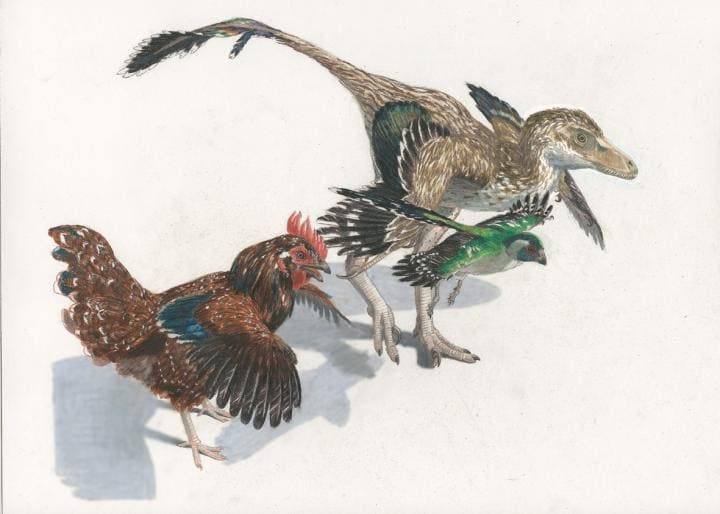
There is a large body of evidence showing that dromaeosaurids were covered in feathers. Some fossils even preserve indications of feathers. Other fossils, which do not preserve actual impressions of feathers, still preserve the associated bumps on the forearm bones where long-wing feathers used to sprout.
This links the raptors more closely to birds than other types of dinosaurs. This shared characteristic has opened new doors in understanding the evolution of both birds and dinosaurs.
So the idea of the velociraptor as a scaly dinosaur falls off quickly. Sorry, Jurassic Park — you messed this one up.
Raptors probably didn’t hunt in packs like wolves
Raptors were not particularly brawny, at least compared to some other dinosaurs. Some evidence suggests that they hunted in packs and were social hunters. But this evidence is very weak.
The only solid evidence for this behavior comes from fossils in China which show six individuals moving together as a group. But plenty of other fossils suggest isolated individuals.
A recent study led by Joseph Frederickson, a vertebrate paleontologist from the University of Wisconsin Oshkosh, challenges the idea of pack-hunting raptors. Instead, they likely hunted solitary like Komodo dragons.
“The problem with this idea is that living dinosaurs (birds) and their relatives (crocodilians) do not usually hunt in groups and rarely ever hunt prey larger than themselves,” he explained.
“Further, behavior like pack hunting does not fossilize so we can’t directly test whether the animals actually worked together to hunt prey.”
Analysis of Deinonychus teeth chemistry indicates diverse diets among individuals, contradicting pack hunting. The same approach could unveil behaviors of other extinct creatures.
What Velociraptor Was Like
The velociraptor was not a towering giant but a relatively small and agile predator. Standing about 1.6 feet tall at the hips and weighing around 33 pounds, it would look more like a large bird than the monstrous beast portrayed in some movies.
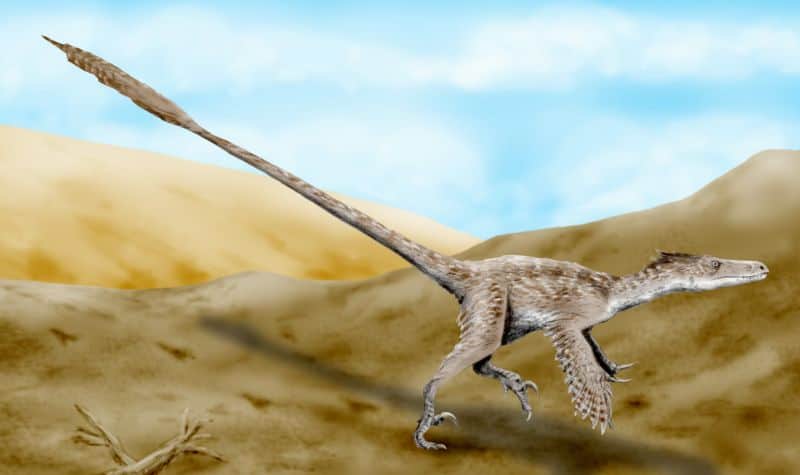
A Cunning Hunter
With a slender body and an agile build, the velociraptor was built for the hunt. Those sharp claws were not just for show; they were precision tools designed for slashing prey.
Velociraptor may have been nocturnal, or hunted during the twilight. According to one study carried out by Denver Fowler, curator at the Badlands Dinosaur Museum, the velociraptor would have leaped and restrained its prey under its body weight. They would have leaped onto the prey, pinning it down, and then slashing at it with sickle-shaped claws.
However, some studies have also suggested that velociraptors would have scavenged, at least sometimes. A 2010 study found conclusive evidence for this, showing that a velociraptor feasted on prey killed by another dinosaur.
Ultimately, the velociraptor was probably opportunistic, being capable of still hunting smaller prey (or baby dinosaurs), but not shying away from a scavenged meal.
Velociraptor feathers
As mentioned, some of velociraptor’s cousins could have (maybe) flown. But velociraptors didn’t fly. So then, why did it have feathers?
For starters, paleontologists have found quill knobs in velociraptors — so we’re pretty sure velociraptors had feathers. Some researchers suspect that an earlier ancestor to the velociraptor had feathers and could fly, but then lost this ability. So then, why did it have feathers in the first place?
The feathers of the flightless Velociraptor may have been used for display, much like the feathers of a peacock. Another use would have been to cover their nests while brooding. Also, feathers could have added speed and thrust when running up inclined slopes.
No doubt, future research will uncover even more information about the velociraptor feathers.
Velociraptor in Jurassic Park
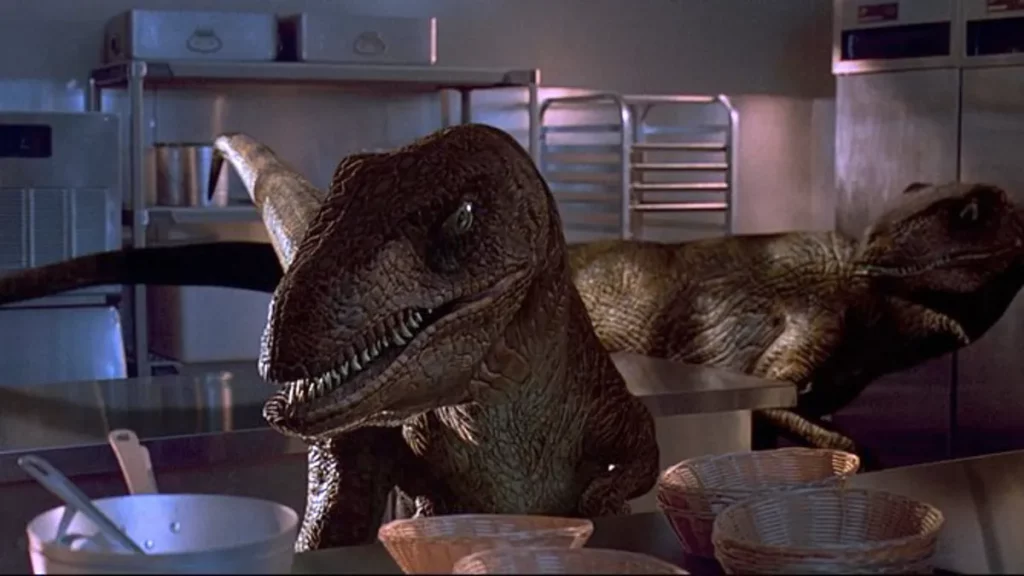
It’s no secret that “Jurassic Park” took some liberties with its depiction of the velociraptor.
The film’s raptors were actually modeled after a larger cousin of the velociraptor, known as Deinonychus. The name “velociraptor” simply sounded more thrilling, so it stuck. This doesn’t even go back to the movies — it goes back to the novels. The original Jurassic Park is based on a Michael Crichton novel. When Crichton wrote the novel, he based his velociraptors on Deinonychus.
Scaring Up Interest
The exaggerated size and features of the velociraptor in “Jurassic Park” served to create a more menacing antagonist. It’s all part of the magic of cinema, where fact sometimes gives way to artistic interpretation for the sake of a good story.
Also, there was substantial evidence for feathers on velociraptors back then as well. But a winged raptor doesn’t seem as menacing as a scaled one (probably). So producers ultimately ended up with a scaly dinosaur.
Ultimately, you shouldn’t really base your idea of the velociraptor on what you see in Jurassic Park, but the movie did definitely stir a lot of interest in dinosaur species.
Velociraptor facts
- Size: Adults were approximately 1.5–2.07 m (4.9–6.8 ft) long, approximately 0.5 m (1.6 ft) high at the hips, and weighed about 14.1–19.7 kg (31–43 lb).
- Diet: Carnivorous, primarily feeding on smaller herbivorous dinosaurs, reptiles, and possibly insects.
- Habitat: Lived in what is now Central Asia, in arid and semi-arid environments. Particularly in today’s Mongolia.
- Era: Thrived during the Late Cretaceous period, around 75 million years ago.
- Specialized Claw: Featured a large, curved claw on the second toe of each hind foot, used for hunting.
- Feathers: Likely covered in feathers, though not for flight—possibly for insulation, camouflage, or display.
- Tail: Rigid tail used for balance during fast movements and leaps.
- Intelligence: Considered one of the more intelligent dinosaurs, possibly capable of social behavior and hunting in packs.
- Fossils: First discovered in the Gobi Desert, Mongolia.
- Depictions in Media: Often portrayed inaccurately in films and media, particularly regarding size and appearance.
- Relation to Birds: Part of the dromaeosauridae family, showing strong evolutionary connections to modern birds.
- Arm Length: Possessed relatively long arms, with three-fingered hands and claws.
- Potential Vocalizations: May have used vocalizations for communication, though this remains speculative.
- Hunting Strategy: Believed to have been an agile and opportunistic predator, possibly capable of strategic planning in hunting.
- Bird-like Features: Its likely feathered appearance and skeletal structure provide key insights into the evolution of birds.
- Egg Laying: Like other dinosaurs, it would have laid eggs, but details about its nesting behavior remain unknown.
- Discovery: First described by paleontologist Henry Osborn in 1924.
- Social Behavior Debate: Ongoing debate among scientists regarding whether it was a solitary hunter or lived in packs.
- Speed: Estimated to have been capable of running at speeds up to 24 miles per hour.
- Cultural Impact: Has become a cultural icon, featured prominently in literature, films, and other media.
- Name Origin: The name “velociraptor” comes from the Latin words for “swift” and “robber” or “plunderer.”
- Bone Structure: Hollow bones, similar to birds, which may have contributed to its agility and speed.
- Extinct Relatives: Part of a diverse family of raptors, including other species like the Deinonychus and Microraptor.
- Paleontological Importance: Its fossils have contributed significantly to our understanding of dinosaur anatomy, behavior, and evolution.
Conclusion
The velociraptor may not have been the enormous, scaly monster portrayed in Hollywood, but that doesn’t diminish its fascination. Its agility, social habits, and unique features continue to captivate researchers and dinosaur enthusiasts alike.
From the turkey-sized reality to the cinematic behemoth, the velociraptor’s legend lives on. While movies like Jurassic Park are hugely important in sparking public appreciation for dinosaurs, it’s important to look at what the velociraptor (and other dinosaurs) were really like. They were absolutely fascinating creatures without Hollywood’s embellishments, and while we don’t know everything yet, we already know quite a lot about some creatures that lived 70 million years ago.






